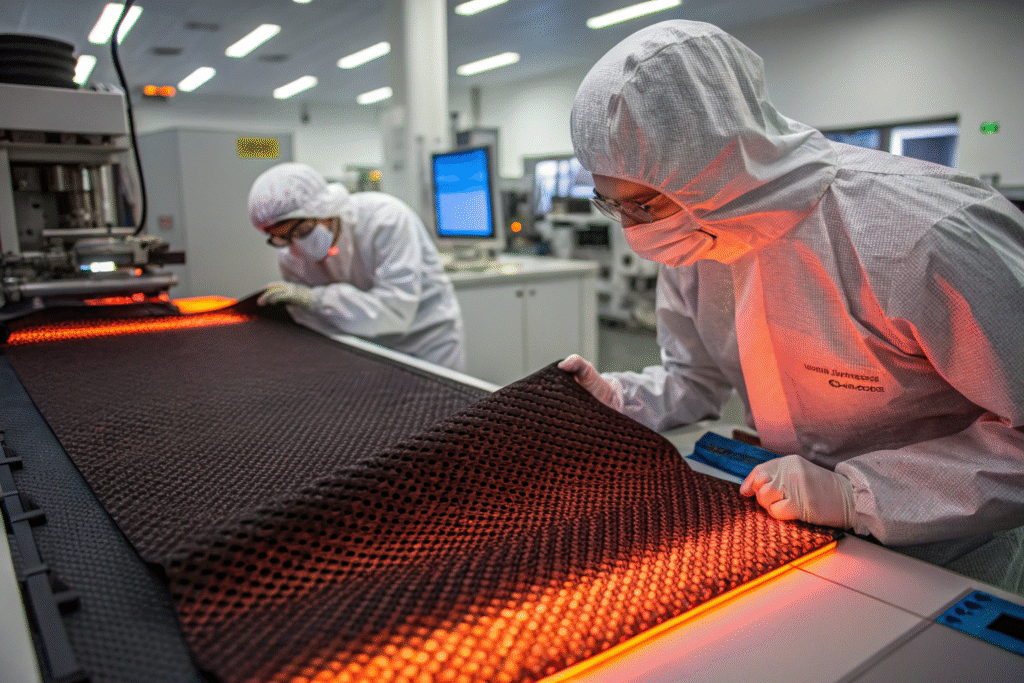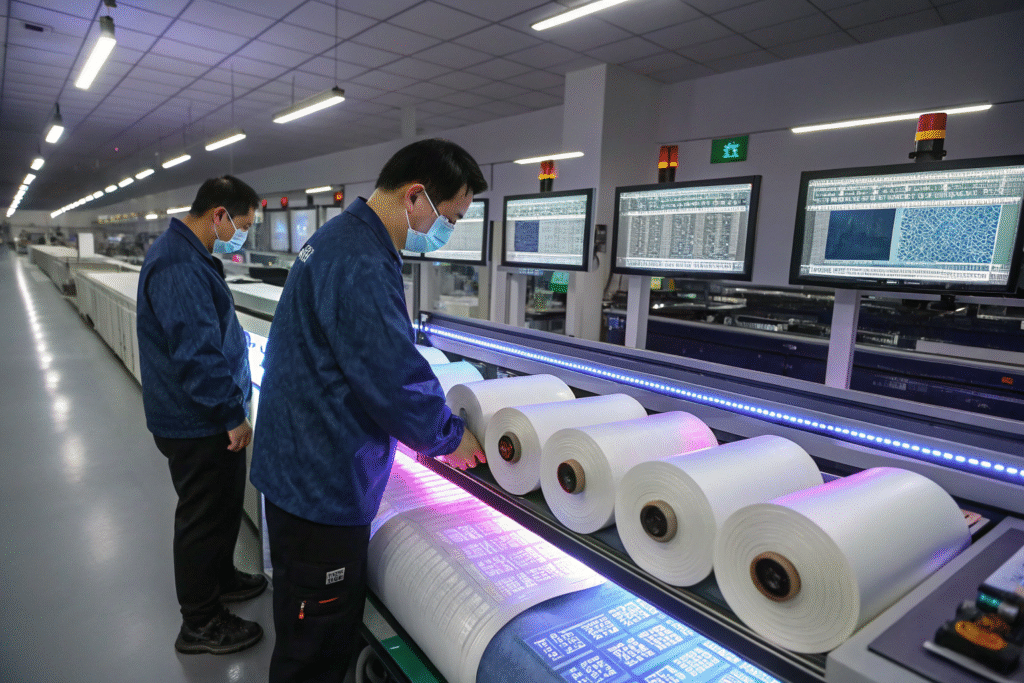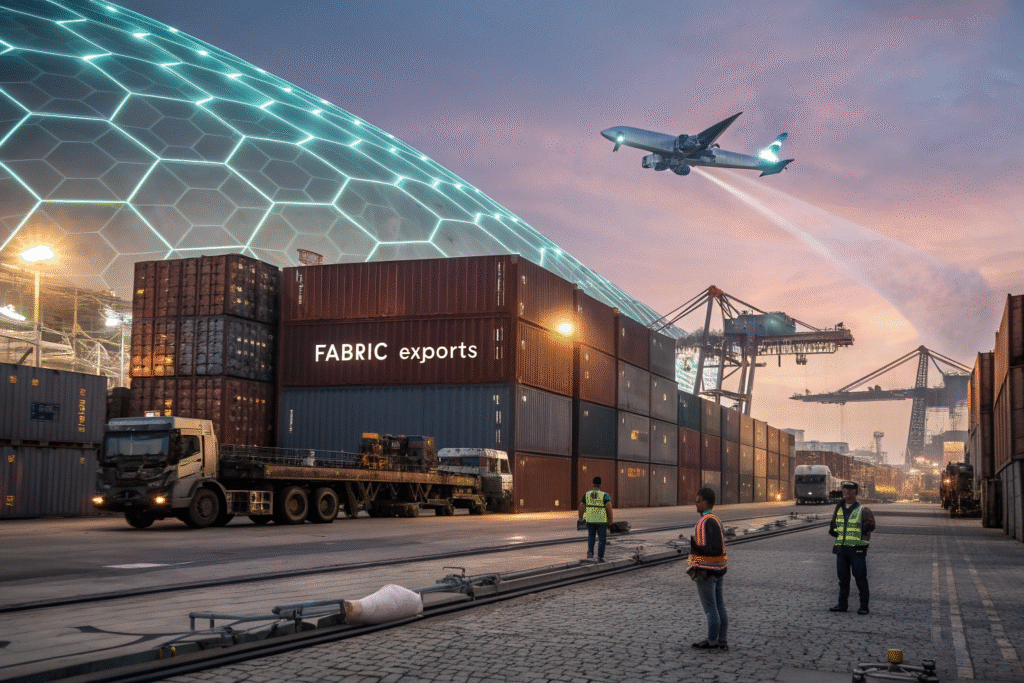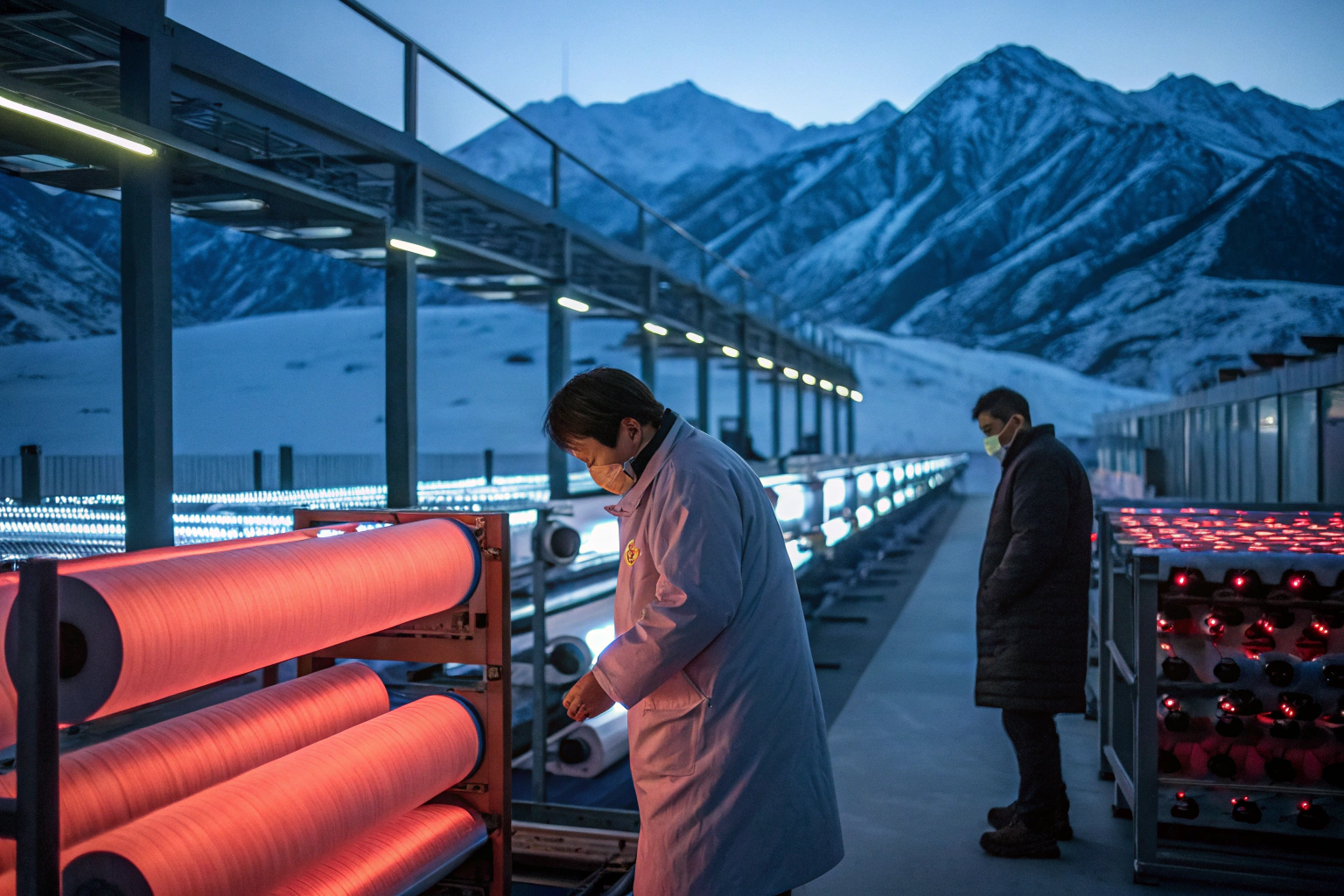When temperatures fall to extreme lows, conventional fabrics often fail to provide consistent warmth. Buyers across the United States and Europe encounter recurring issues with bulky jackets, unstable insulation, and limited durability. These challenges raise concerns for professionals who require reliable performance and certified production.
Self-regulating graphene heating textiles offer uniform warmth, safety, and advanced adaptability without unnecessary weight. This technology applies nanostructures that adjust heat distribution according to body temperature, ensuring long-term stability in demanding environments.
That is why global apparel brands and large-scale factories are shifting toward graphene heating solutions. With the right partner, they gain stable supply chains, certified quality, and rapid development capacity. Let us examine why these textiles are becoming an essential choice for the cold-weather market.
Benefits of Graphene Heating Fabrics
Buyers often question why graphene fabrics stand out compared with conventional thermal wear. The main reason lies in the combination of science, performance, and safety. Common frustrations include inconsistent insulation, weak durability, and unsafe heating wires.
Graphene heating fabrics provide uniform warmth, fast response, and self-regulation that prevents overheating. Unlike electric wires or chemical packs, nanostructures distribute heat intelligently, which makes the fabric safer and more durable.

These qualities ensure both comfort and technical reliability. At Fumao Fabric, our CNAS-certified laboratory validates every batch under international standards, ensuring consistent supply for outdoor brands, fashion companies, and children’s wear factories.
How does graphene generate heat safely?
Graphene generates heat through resistance when connected to a power source. Its honeycomb structure allows even current distribution, eliminating hot spots. Unlike electric heating elements, graphene remains flexible and lightweight. Research supported by Graphene Flagship confirms superior thermal conductivity and stability, which makes it safer in extreme cold.
Why is self-regulation important in cold climates?
Self-regulation prevents overheating while maintaining comfort in variable environments. As body temperature increases, graphene reduces heat automatically. Traditional thermal wear often fails in this balance. Reports in Textile World highlight how self-regulating textiles improve both efficiency and safety. For professionals and explorers, this technology reduces risk and ensures consistent protection.
Applications in Outdoor and Workwear
Extreme environments demand more than ordinary insulation. Buyers sourcing ski wear, tactical uniforms, or industrial workwear complain about bulk, weight, and low durability. They need lightweight but effective materials.
Graphene heating fabrics are already used in outdoor jackets, tactical uniforms, gloves, and sleeping bags. They reduce weight, increase flexibility, and perform effectively in temperatures as low as -30°C.

At Fumao Fabric, we offer both woven and knit forms, adaptable to sportswear, industrial gear, and children’s products. Our rapid development system supports fast sampling and bulk production with reliable quality.
Can graphene textiles replace down jackets?
Down jackets rely on trapped air for insulation. They are bulky, heavy, and less effective when wet. Graphene fabrics, however, are thin, lightweight, and water-resistant. Studies in Advanced Functional Materials demonstrate that graphene coatings outperform traditional insulation in active cold-weather use. Many brands now integrate graphene heating layers with lightweight shells to replace heavy down.
What industries benefit most from graphene heating fabrics?
Industries such as outdoor sports, logistics, defense, and healthcare gain from graphene textiles. Soldiers in polar climates, storage workers, and winter athletes require balanced heat regulation. Research on ResearchGate shows strong potential for smart uniforms and wearable devices. By reducing bulk and improving comfort, these fabrics support both productivity and safety.
Production and Quality Control Standards
Buyers often ask whether advanced fabrics like graphene textiles can be produced consistently at scale. This concern is valid since many labs can only create samples but not deliver bulk orders.
At Fumao Fabric, we integrate weaving, dyeing, coating, inspection, and packaging. Our CNAS-certified lab ensures every roll meets SGS and ITS standards before delivery.

With AI-supported analysis and strong local finishing partners, we deliver samples within 48 hours and full orders in weeks. This speed supports global brands and keeps supply cycles efficient.
How do we ensure international certifications?
Each batch is tested for shrinkage, composition, and colorfastness under CNAS standards. Our fabrics carry recognition from SGS and Intertek, reducing customs rejection risk. Buyers who choose certified supply enjoy better efficiency and stronger credibility in global trade.
What tracking systems guarantee transparency?
We use QR code tracking for each fabric roll. Buyers access full reports on thermal performance, tensile strength, and washing durability. As Fibre2Fashion notes, transparency builds trust and enhances supply chain accountability. This system reassures buyers that their orders are reliable and traceable.
Cost Efficiency and Global Supply Chain
Pricing inefficiency, tariffs, and logistics delays are common pain points for American and European buyers. Suppliers often fail to provide flexible financing or reliable shipping.
By producing in Keqiao—the global textile hub—we leverage multimodal transport, bonded warehouses, and Belt & Road logistics to reduce cost and time. Our banking partners ensure cash flow security for large-volume orders.

This foundation makes graphene textiles more cost-efficient for long-term sourcing.
How do we reduce tariff costs?
By diversifying exports across RCEP and Belt & Road markets, we offset U.S. tariff impacts. Our customs solutions shorten lead times and cut landed costs. As Trade.gov explains, strategic trade planning reduces risk and secures better pricing. Buyers gain efficiency with flexible tax management.
What payment and shipping options do we offer?
We offer letters of credit, open account terms, and financing for strategic partners. Logistics include sea, air, and rail, with bonded warehouses in Europe to reduce clearance delays. Textiles Today confirms the growing need for multimodal logistics in global trade. These solutions improve both delivery time and financial flexibility.
Conclusion
Self-regulating graphene heating textiles are a key step in fabric innovation. They provide intelligent heat regulation, safety, and certification for both fashion and industrial applications. Buyers seeking reliable supply find in Fumao Fabric not just a supplier but a partner in quality and speed.
For inquiries and collaborations, please contact our Business Director Elaine at elaine@fumaoclothing.com.










